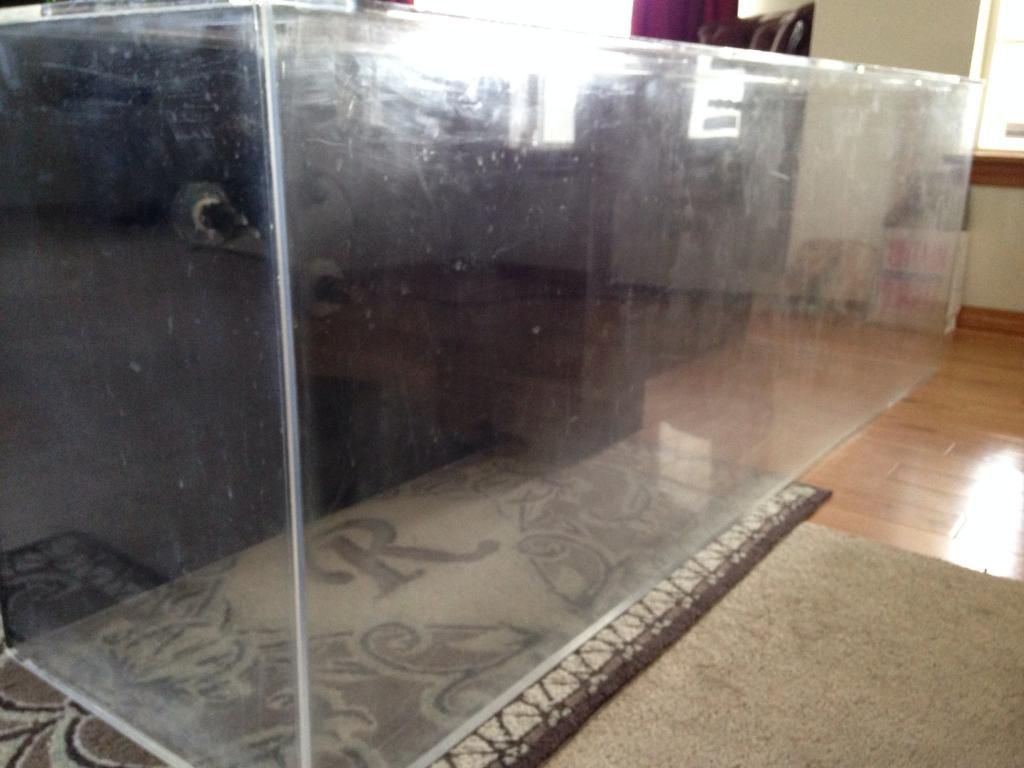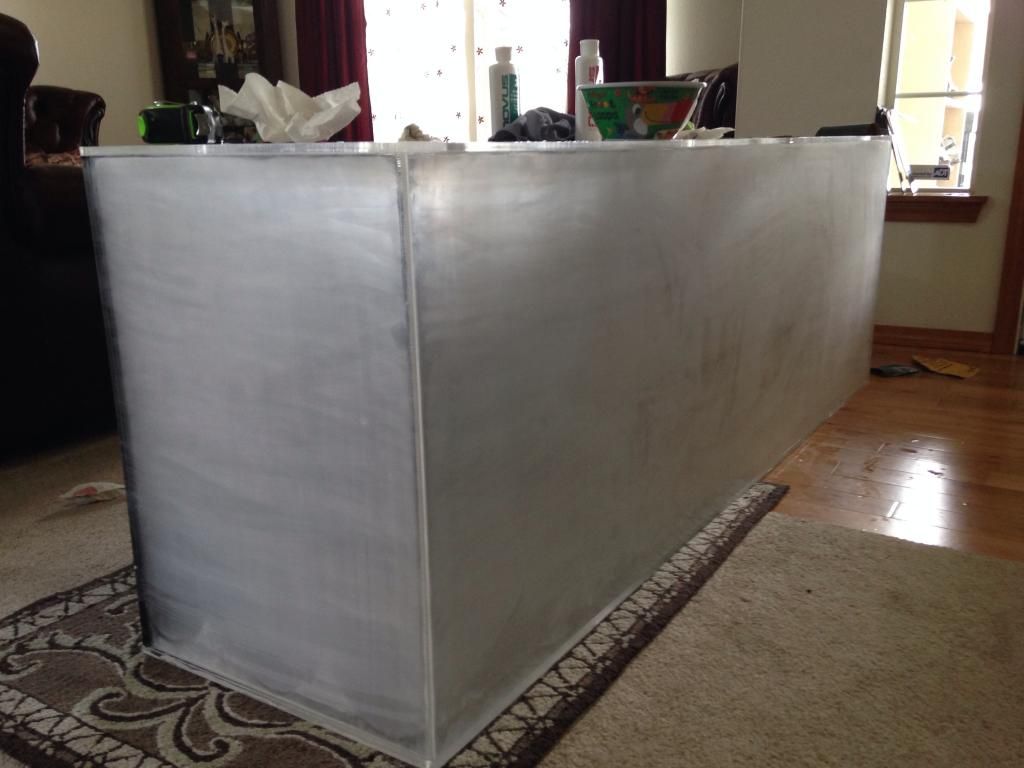SonicsDC25
New Member
Here are the before, after sanding and the final product pictures. Now have to strip the paint off the stand, sand and repaint it to my wife's liking, hopefully will have the tank up and running by Tuesday or Wednesday night.









:iagree:DMD123 said:Came out very nice! Cant wait to see it all set up.
Aquarium Co-Op said:That amount of salt wont make a difference really. I wouldn't worry about it.
Forgive me me if I am off track with your question. What I see is 2 water returns. For me they are in kind of an odd spot. I am thinking someone custom drilled those holes to be positioned in the center. The way my mind is taking me is eventually you'll invest in a power head or two to aggravate and create surface current.SonicsDC25 said:Actually I was wondering, aside from manual removal, how would the waste be collected since there's no intake? I'm guessing some powerheads or wavemakers to push them towards the overflow, but that's a pretty far stretch?
Worst case, I'll position wavemakers to push the waste to a specific corner so I can spend 30 seconds a day to remove them via turkey baster.
okay, I see all the water returns now. This is typical in salt water set ups for optimal water movment. Technically with an open sump you don't need much surface agitation. Aeriation happens in the filtration process in the sump. I used to play around a lot with my returns for optimal water circulation and current. You will have to play around and make adjustments according to "were you want waste to end up", to eliminate dead spots and of course make your fish comfortable.SonicsDC25 said:Yeah there are 2 outlets in the very corner to return water from the sump, then there are 2 other outlets and intakes drilled into the tank that hooks up to a 2nd pump, which is a bit odd. I don't use it though because the pump is EXTREMELY loud. Also the flow from the sump's return outlets aren't that strong, plus I point them towards the surface for agitation and I just hooked up my 750GPH wavemaker to the left side, did clear a lot of debris from the center and the waste is now primarily on the outside by the left/right walls =\
Maybe 24 hours. I waited 2 days for the stain to dry on my stand.SonicsDC25 said:Anyone know how long I should wait after spray painting the canopy before putting it onto the tank? Don't want to risk anything after all this work to have something potentially harmful from the canopy ruin it all O_O